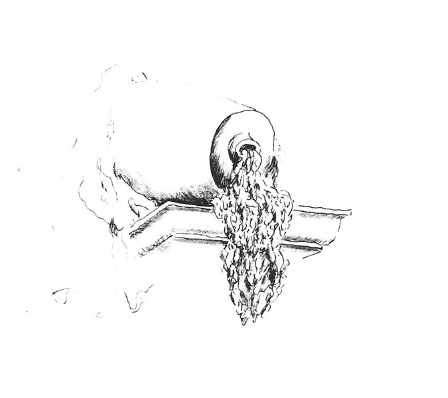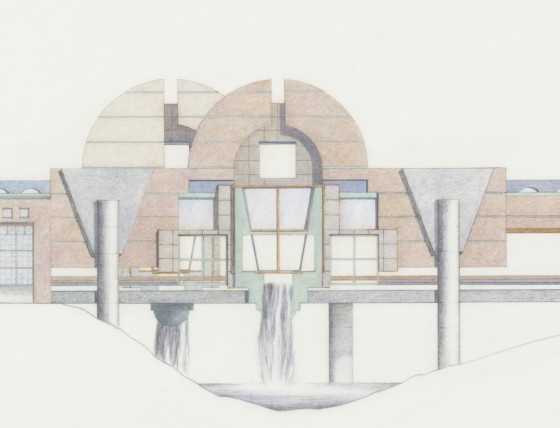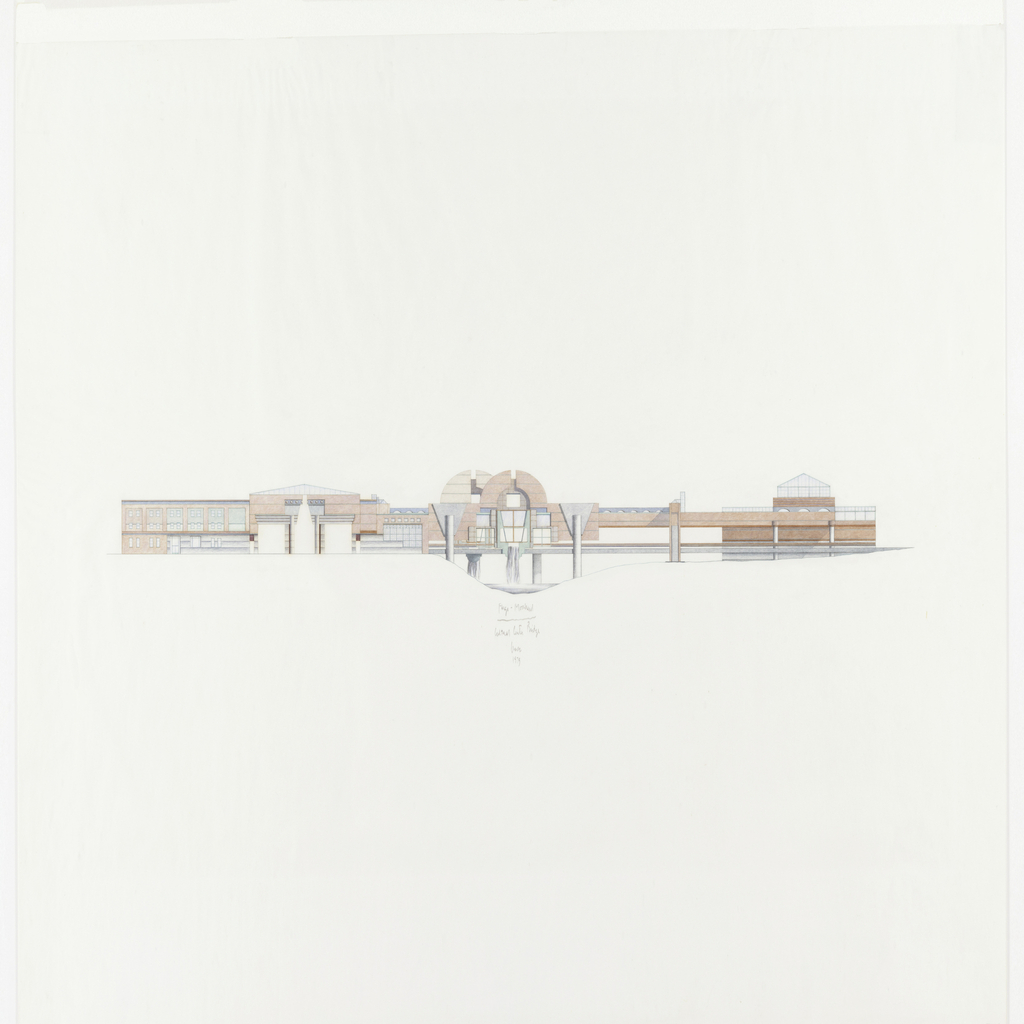The architect Michael Graves, who died last week at the age of 80, was passionate and insistent about the importance of drawing in architectural practice. Over the course of his career, the use of computer-aided design software became ubiquitous among generations of architects, but Graves remained steadfast in his belief that drawing by hand was an essential part of the architectural creative process. He could often be found in his firm’s studio with a roll of yellow tracing paper and a handful of colored pencils. “Drawings are not just end products,” he wrote, “they are part of the thought process of architectural design.”[1]
Graves wrote often of three types of architectural drawing: the referential sketch, the preparatory study, and the definitive drawing. The referential sketch is something of a diary for architects, a form of shorthand notation. Its purpose is to capture an idea, however fragmentary or elusive. The preparatory study is one in a series of drawings in which an architect “elaborates” a design. The definitive drawing indicates details and accurately reflects the proportions and dimensions of the final design.[2] As Graves saw it, architectural drawings begin as a means of discovery, evolve into a form of inquiry, and ultimately elucidate a concept. Drawing is a form of “tangible speculation,” one that reveals traces of intentions and is imbued with visible intonations.[3]
One of Graves’ early major commissions was the Fargo-Moorhead Cultural Center Bridge, which he was awarded in 1977. To commemorate their centennial, and usher in a new era of cultural community building, the twin cities of Fargo, North Dakota and Moorhead, Minnesota had solicited proposals for a complex that would span the Red River that flows between them. The ambitious project was to include an art museum, a concert hall, public radio and television stations, and a history museum. Graves’ proposal, now an early icon of postmodern design, featured rich allusions to Classicism, and had its origins in earlier drawings, such as a referential sketch of the Fontaine de Marie de’ Medicis featuring water spilling from a tipped vase.

Sketch of detail from “Fontaine de Marie de Medicis” as published in Michael Graves, buildings and projects, 1966-1981. New York: Rizzoli, 1982.
Graves’ design features a palette of blue and terra-cotta, as seen below in this detail from one of his definitive drawings. The palette positions the bridge complex as an extension of earth emerging between water and sky. In the center, Graves placed a voided keystone, transformed into a series of windows, which symbolically joined the two cities by placing the focus on the shared river. Graves described this void as a scupper, “which collects the sky and replenishes the river below through a waterfall which issues from its base.”[4] The columns of the structure have been displaced from their traditional positions at the sides of arches. A central “column” is formed featuring the waterfall as a shaft and the window of light as its capital.

Detail from Drawing, Fargo-Moorhead Cultural Center Bridge (South Elevation) Preliminary Study, 1979; Designed by Michael Graves; 1980-4-1. Collection of Cooper Hewitt, Smithsonian Design Museum.
When the Fargo-Moorhead proposal was revealed, Ada Louise Huxtable, the formidable architecture critic of the New York Times, wrote of Graves’ winning submission that it was “probably one of the most beautiful architectural drawings of recent times.” The project was “the sort of work that sends the viewer away with the sense that some kind of breakthrough is being made.”[5]
Graves’ design was never built. In 1978, 53% of Fargo’s voters opposed funding of the project,[6] and an attempt by the city of Moorhead to build the proposed interpretive center on one side of the river subsequently failed.
Although it exists only through drawings, the Fargo-Moorhead Cultural Center Bridge remains one of Michael Graves’ most enduring projects. Graves’ design, with its aspirations of uniting communities through art and culture and its occupation of space balanced between earth, water and sky, comes to lyrical fruition on the page. It is a reminder of a maxim Graves repeated over and over: “drawings express the interaction of our minds, eyes, and hands.” The act of drawing “allows us to speculate about ideas, a good sign that we’re truly alive.”[7]
Caitlin Condell is the Assistant Curator in the Department of Drawings, Prints & Graphic Design at Cooper Hewitt, Smithsonian Design Museum.
[1] Michael Graves, “Architecture and the Lost Art of Drawing,” The New York Times, September 1, 2012.
[2] Michael Graves, “Referential Drawings,” JAE 32, no. 1 (September 1, 1978): 24–27; Michael Graves, “The Necessity for Drawing: Tangible Speculation,” Architectural Design (June 1977).
[3] Graves, “Architecture and the Lost Art of Drawing.”
[4] Graves, Michael, et. al. Michael Graves, buildings and projects, 1966-1981. New York: Rizzoli, 1982. p. 111.
[5] Ada Louise Huxtable, Architecture, Anyone? (New York: Random House, 1986), 67–68.
[6] “A Bridge Too Far,” Architect Magazine, accessed March 16, 2015, http://www.architectmagazine.com/urban-design/a-bridge-too-far.aspx.
[7] Graves, “Architecture and the Lost Art of Drawing.”
